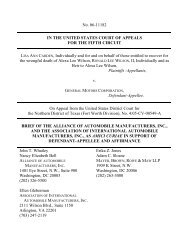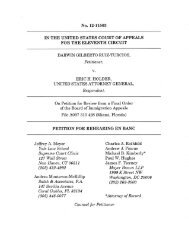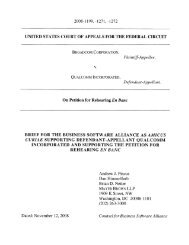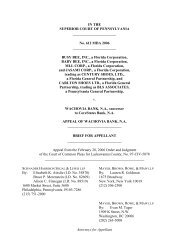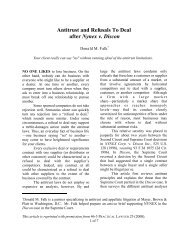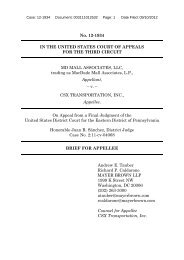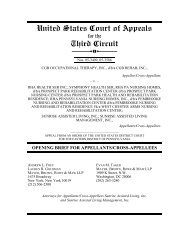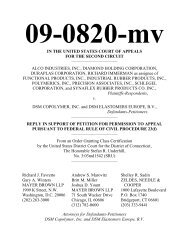No. 5-99-0830 IN THE APPELLATE COURT OF ... - Appellate.net
No. 5-99-0830 IN THE APPELLATE COURT OF ... - Appellate.net
No. 5-99-0830 IN THE APPELLATE COURT OF ... - Appellate.net
You also want an ePaper? Increase the reach of your titles
YUMPU automatically turns print PDFs into web optimized ePapers that Google loves.
When these fundamental principles are applied to plaintiffs’ breach of contract<br />
claims, it becomes apparent that the circuit court abused its discretion first by certifying the<br />
class and then by denying State Farm’s motions to decertify.<br />
1. Plaintiffs’ Contract Claims Raised A Host Of Fact Questions<br />
That Could Be Fairly Resolved Only On An Individual Basis.<br />
The circuit court reaffirmed the ex parte class certification order on the ground that<br />
State Farm’s “common pattern” of specifying non-OEM parts created a common issue of<br />
“contract[] interpretation.” A. 29. Subsequently, however, the court resolved any question<br />
of contract interpretation by concluding that all of State Farm’s policies — regardless of<br />
differences in language and governing state laws — imposed the same obligation: to pay for<br />
parts of like kind and quality which restore the policyholders’ vehicle to its pre-loss<br />
condition. R. 4426; A. 59-60. 17/ Having defined State Farm’s obligations under its policies,<br />
the court should have gone on to consider whether State Farm’s compliance with that<br />
obligation could be determined based on common evidence, rather than inquiring into each<br />
individual repair. See Eshaghi, 214 Ill.App.3d at 1001 (to determine predominance, “the<br />
court must inquire into the issues raised and standard of proof required by the substantive<br />
law upon which plaintiff’s complaint is based”).<br />
The circuit court, however, refused to conduct the required predominance analysis.<br />
The court did not consider what facts plaintiffs would have to prove to establish the elements<br />
of each class member’s individual breach of contract claim. <strong>No</strong>r did it consider what kind<br />
franchisees”).<br />
17/<br />
As demonstrated in Part I(A)(3) below, the circuit court was plainly wrong in<br />
concluding that a single contractual standard applies to all claims of all class members.<br />
-34-



